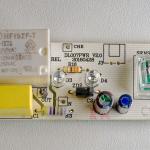
The Government of the Republic of Moldova adopted Decision No. 643 (October 1, 2025) approving the Technical Regulation on the restriction of the use of certain hazardous substances in electrical and electronic equipment (Moldova RoHS).
The regulation aligns national legislation with EU Directive 2011/65/EU (RoHS Directive), as amended by Delegated Directive (EU) 2024/1416.
It was published in the Official Monitor on October 10, 2025 (No. 526–528, Article 675).
Purpose and Scope
The regulation aims to protect human health and the environment by limiting the use of certain hazardous substances in EEE, including during waste management and recycling.
It applies to categories of electrical and electronic equipment listed in Annex No. 1, except for specific exemptions (e.g., military equipment, space devices, large fixed industrial installations, transport vehicles, professional non-road machinery, medical implants, photovoltaic panels for permanent installation, and research-only devices).
Harmonization with the EU
The regulation transposes the EU RoHS Directive (2011/65/EU).
CE conformity marking requirements apply, but until Moldova joins the EU, national “SM” conformity marking is also allowed but products marked with CE do not require SM marking.
Implementation Timeline
The regulation enters into force 12 months after publication (October 2026). Certain provisions become effective after Moldova ratifies the EU-Moldova Agreement on Conformity Assessment and Acceptance of Industrial Products (ACAA).
Hazardous Substances
EEE placed on the market must not contain restricted substances listed in Annex No. 2 above maximum concentration limits (per homogeneous material).
Substances include lead, mercury, cadmium, hexavalent chromium, PBB, PBDE, and several phthalates (DEHP, BBP, DBP, DIBP).
Certain exemptions and transitional provisions apply to spare parts, medical devices, and older equipment.
Responsibilities of Economic Operators
Manufacturers must ensure EEE design and production comply with the regulation, perform conformity assessments, issue EU Declarations of Conformity, and affix the CE mark.
Authorized representatives, importers, and distributors have defined responsibilities for documentation, traceability, and ensuring compliance before placing products on the market.
Records and technical documentation must be kept for 10 years.
CE Marking and Conformity
CE marking indicates conformity with applicable EU requirements.
It must be visible, legible, and indelible, applied before the product is marketed.
No other marks may mislead about CE conformity.
National authorities may monitor or sanction improper marking.
Market Surveillance and Enforcement
Oversight is entrusted to the Environmental Protection Inspectorate.
The Ministry of Environment is responsible for updating and harmonizing standards and for monitoring implementation.
Non-compliant products may be withdrawn, recalled, or prohibited from the market.
Cases of cross-border non-compliance will be communicated to the European Commission and EU Member States after Moldova’s EU accession.
Administrative Measures
Formal non-compliance (e.g., missing CE mark, incomplete documentation, or inaccurate labeling) triggers corrective actions or market restrictions.
Economic operators must cooperate with inspectors and maintain traceability records of suppliers and distributors for at least 10 years.





